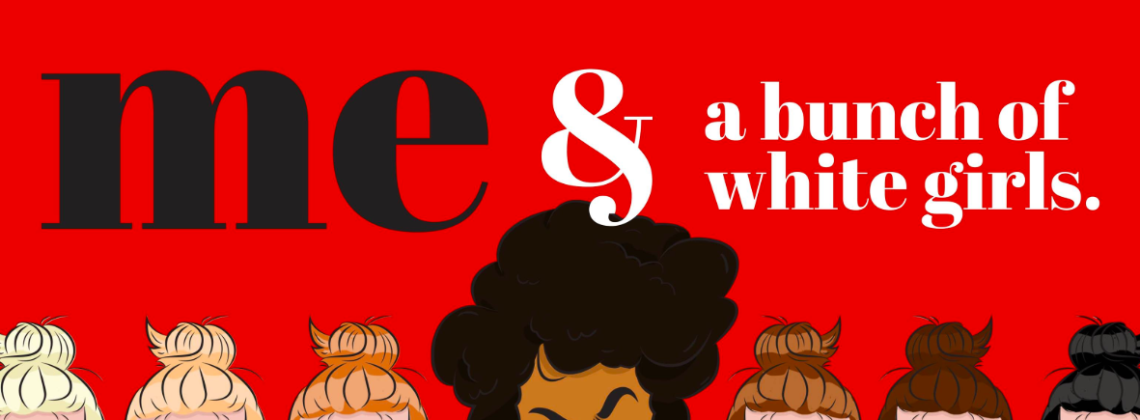In last week’s episode of a Me and a Bunch of White Girls, Laura, a diversity and inclusion consultant, described how her experiences in the financial sector motivated her to tackle D&I work:
America has so many problems, and this [lack of diversity] is one of them. We continuously keep these spaces so white. [….] Especially in the financial industry, there’s not enough black and brown people. The wealth continues to circulate within white cultures and white groups. Black and brown people aren’t making it into these spaces to influence where the money flows, or to get the money themselves.
Obviously, those who want to dismantle capitalism itself would critique her argument – why should women and people of color choose to participate in an extractive system? In that way of thinking, trying to make banking more diverse is one of those ‘surface-level’ fixes that might entrench inequality even more deeply (re: this Onion article – “Shocking: The Average Female CEO Only Makes 258 Times What Her Employees Make”).
Laura draws a brilliant connection between the internal problems that banking has with diversity and inclusion and the failure of those institutions to systematically improve the lives of ordinary Americans. A more diverse banking sector wouldn’t be good only for the women and people of color who would reap the professional benefits of membership – it’s also necessary for developing a financial sector that does more good than harm for the majority of people.
Banking fails to see the real value of diversity
When I worked at Capital One, I did ‘mock interviews’ for people (mostly students applying for their first job out of college) who had passed the resume screen and would be interviewed soon. Later, I conducted interviews for campus and professional hiring of analysts and product managers.
One mock interview I did stood out to me. The student was a senior at Duke, and a member of Mi Gente, the school’s Latin/x organization. His public high school in Los Angeles was primarily Mexican-American and predominantly low-income.
Like many banks and consulting companies, we used ‘case interviews’ to screen candidates. Prospective analysts were given a business problem to solve in a way that usually has a ‘right answer.’ Our mock interviews use cases that were several years old and had been retired out of the old interview pool.
This case asked candidates to evaluate whether a sandwich shop should run a promotion to price their 12-inch sandwiches at $5. In the case, you’d consider things like whether demand increases enough to offset the lower prices, and what happens if customers shift their mix of purchased sandwiches from cheap ingredients like tuna to more expensive ingredients like steak as a result of the promotion. To start you’re told only the basics and are asked: “What types of things should the sandwich shop consider before running the promotion?”
The student answered, “They should think about what $5 means in the context of the neighborhoods where they’re located. At Duke, a $5 sandwich would be a relatively good deal, but where I grew up, that would be a pretty expensive lunch.”
His answer exactly illustrated what banking needs more of:people who can contextualize what business decisions will mean in the lives of the communities that banks need to better serve. Like many companies, Capital One had programming to encourage applications from underrepresented minorities – things like funding diversity scholarship, and hosting events with black and latino student organizations – but they were missing a framework for recognizing organizational blind spots, and seeing how people of color and women could eliminate those blind spots. I think most of corporate America has some basic diversity awareness, roughly at the level of: ‘oh, wow, way less than half of Americans are white men so if we only hire white men suuuurely we must be missing out on at least a few qualified people.’ But predominantly-male and predominantly-white workforces miss out on so much more than ‘extra people.’ There needs to be spaces on both our literal and metaphorical talent rubrics for the people who can come and explain to everyone else what they’ve been missing.
Banking and other ‘elite’ professional cultures continue to be exclusive
Louis Hyman’s 2018 book Temp discusses the stratification into the workforce into secure and contingent employment, and in it, he chronicles how the rise of consulting firms helped created that economic order. In doing so, he also highlights the social culture of consulting, and his description still rings true for the cultures in ‘elite’ professions like banking, consulting, and law:
As much as consulting was mental, it was also athletic. The consulting life was hard and the consultant needed stamina […] Spending ten to fourteen hours in a day in a room with colleagues you had never met before was a recipe for disaster unless the associates had exceptional social skills or similar social backgrounds. By recruiting from the same elite schools, McKinsey helped reinforce a shared social background. Bower said that in the 1940s he would only hire an associate he ‘would be glad to go on a tiger hunt with.’ Self-presentation mattered as much as ideas. Even though Bower believed in intellectual iconoclasm, he also believed in social conformity. McKinsey men did not look better or worse than their clients. Conformity in style meant the clients would listen to new ideas.
A 2016 randomized controlled trial published in the American Sociological Review found that top law firms penalized candidates that appeared to be from poorer class backgrounds:you were better off having been a ‘peer mentor for first year students’ than a ‘peer mentor for first-generation college students’, for having done sailing rather than track and field, and for having received a generic athletic award rather than an award for outstanding athletes on financial aid. And of course, hiring discrimination against women and people of color is also well-documented.
Questions like “is this person a culture fit?” mean so much more than “let’s make sure we don’t hire someone who’s a massive jerk” but also “does this person conform to my subtle expectations for how the people around me should speak and look and act?”
I’m not especially optimistic about this changing – even if it would be in firm’s best interest to do so. Part of this is a ‘management capitalism’ versus ‘shareholder capitalism’ problem – e.g. that employees desires to work with other people of the same racial and class background is strong enough that they’ll discriminate at their company’s expense. Banking has such an incredibly profound impact on Americans lives though, so I hope Laura and others will keep trying.






One Comment
Watchers
The adoption of the market-based reforms in post-apartheid South Africa meant that the already skewed distribution of wealth in the country got worse. Whites continued to reap the rewards of their previous privilege under the new economic system.